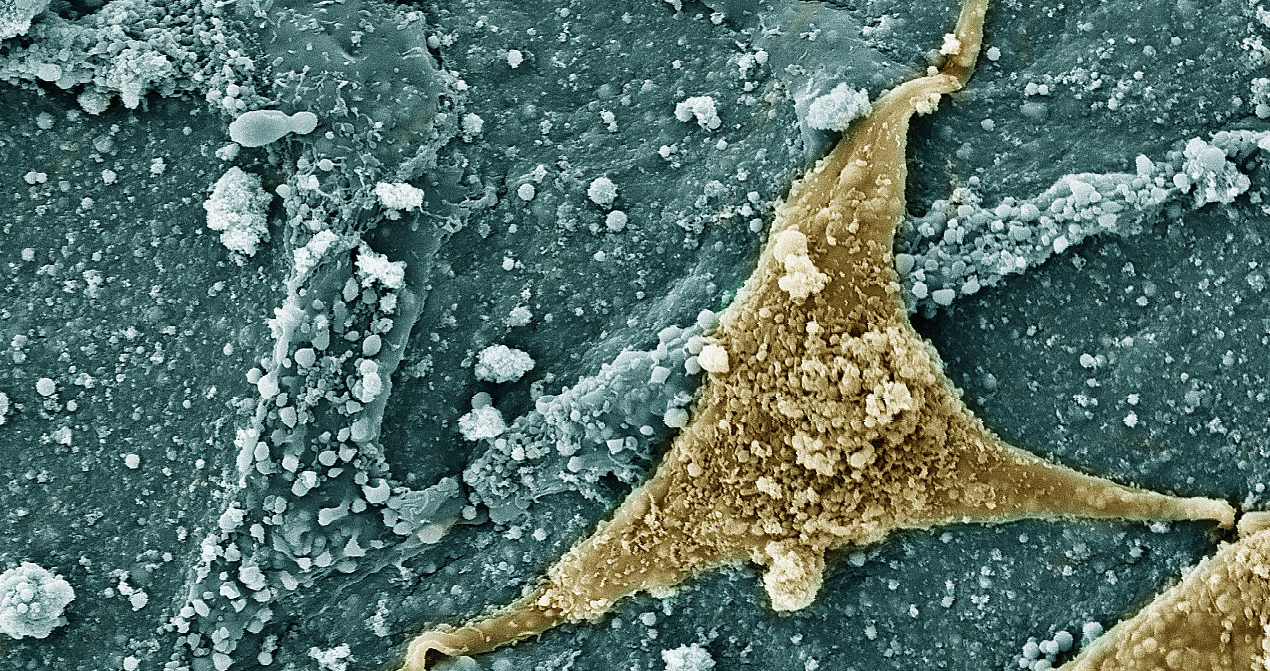
The National Institutes of Health (NIH) has awarded an NIH Director’s New Innovator Award to Dr. Akhilesh Gaharwar, assistant professor in the Department of Biomedical Engineering at Texas A&M University, to develop mineral-based technology for regenerative therapies.
The award is part of the NIH Common Fund High-Risk, High-Reward research program, and this is the first time that an award from that program has been received by a researcher in the Texas A&M College of Engineering.
By understanding how human stem cells interact with specific minerals, Gaharwar hopes to engineer therapeutics to regulate and direct the stem cell differentiation.
“We know, for example, that calcium, magnesium and zinc help to promote bone health, but how? What happens to the bone forming cells when they are subjected to these minerals? How can the minerals be used to direct healing of broken bones?” Gaharwar said.
Established in 2007, the NIH Director’s New Innovator Award supports unusually innovative research from early career investigators who are within 10 years of their final degree or clinical residency and have not yet received a research project grant or equivalent NIH grant.
“I continually point to this program as an example of the creative and revolutionary research NIH supports,” said NIH Director Dr. Francis S. Collins. “The quality of the investigators and the impact their research has on the biomedical field is extraordinary.”
Gaharwar said the reason he was awarded this grant was because of a unique bottom-up approach to develop regenerative therapeutics.
Currently, it’s possible to introduce growth factors, a group of proteins that stimulates growth of specific tissues, into the body, but there are a range of complications including uncontrolled tissue formation, inflammation and even formation of tumors.
Gaharwar’s research looks to reduce or eliminate use of growth factors by introducing minerals. A better understanding of how stem cells interact with minerals would help to design mineral-based nanocapsules that could stimulate repair and regeneration of damaged tissues.
“Imagine a nanocapsule that could specifically target knee cartilage,” he said. “Right now the only treatment we have for severe osteoarthritis in the knee is replacing the entire knee, which is expensive and has a plethora of complications. What if we could regrow knee cartilage with a mineral nanocapsule?”
Gaharwar’s research will combine computational genomics, stem cell biology, materials science and microfabrication into what he calls ‘mineralomics,’ or the large-scale understanding of the effects of minerals on cells.
“The goal of this specific award is to gain novel insight into what’s happening at a molecular level when cells uptake minerals and its effect on different cellular processes including cell differentiation,” he said.
Gaharwar also recently received an award from the National Science Foundation to design next generation inks for 3-D bioprinting complex tissue structure.
Both projects further the goal of his lab, the Inspired Nanomaterials and Tissue Engineering Laboratory, to develop nanoengineered strategies to regulate stem cell behavior for the repair and regeneration of damaged tissues.